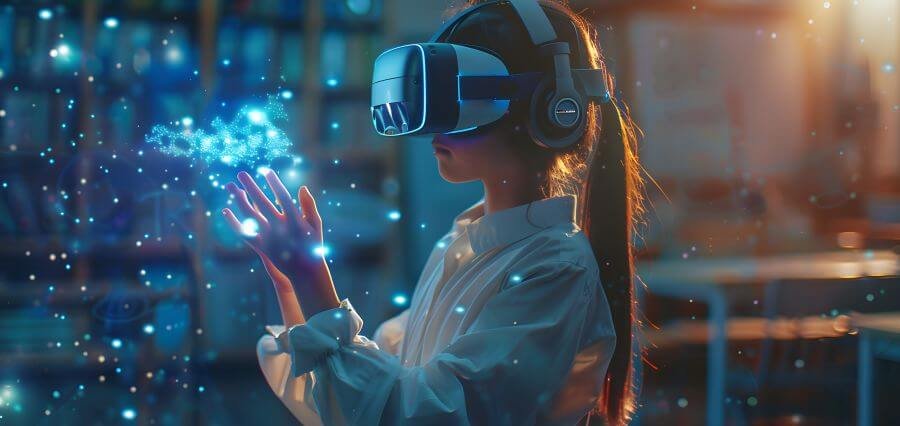There are some fundamental rights of education, and millions have no access to good learning with disabilities, socio-economic condition, or because of place. This is where inclusive education technologies find their worth in providing access to equitable education for everyone. In this context, it takes up the challenge of bringing about a more inclusive environment for learning in the era of these emerging inclusive education technologies.
Definition of Inclusive Education
Inclusive education would allow inclusion of all students in one environment regardless of their ability, background, or challenge in an integrated learning environment. Diversity, equity, and support are some of the facets that will be ensured on every learner’s capability toward maximizing full potential. On the other hand, making education inclusive involves breaking the barriers to achieving this type of learning environment, for instance, through inadequate resource provision, untrained teaching staff, and inaccessible study materials.
This is where inclusive education technologies play a crucial role in bridging gaps and ensuring every learner receives the education they deserve.
The Need for Inclusive Education Technologies
Inclusivity in education is quite impossible without technology. This is because traditional models of education have failed to offer the needs of the learner with a disability, learner from a marginalized community, and learner from a remote setting.
All these gaps are filled by inclusive education technologies as follows:
Accessibility: Screen readers, audiobooks, and speech-to-text software offer equal access to learning for the visually or hearing-impaired.
Personalization: Adaptive learning platforms adapt to individual learning paces and styles, accommodating diverse needs.
Geographical Barriers: Online education platforms reach learners in remote or underserved regions, democratizing access to quality education.
Engaging Students: Interactive tools and gamified content help make learning more engaging and effective for all students.
Technologies for Inclusive Education
There are many technologies that are changing the face of education. Let’s consider some of the key innovations in this area:
- Assistive Technologies
Assistive tools are developed to assist students with disabilities so that they can fully participate in the learning process.
Screen Readers: Assist visually challenged students with rendering text into speech.
Hearing Aids and Captioning Tools: Live captions to the hearing-challenged student are given during the lectures
Alternative Input Devices: For physically challenged students, it is joysticks, eye-tracking systems, and special keyboards
- Artificial Intelligence
AI-based technologies are redefining education, allowing learning to be more individualized and accessible
Adaptive Learning Platforms: AI adjusts the content based on the learner’s progress so that every learner can learn at their pace.
Speech Recognition Software: Converts spoken language into text, aiding students with hearing or mobility challenges.
Chatbots: Provide round-the-clock support to students, answering queries and guiding them through learning materials.
- Digital Content Platforms
Online platforms like Coursera, Khan Academy, and Udemy cater to diverse learners, offering courses with subtitles, multiple languages, and accessible formats. These platforms embody technologies supporting inclusive education by making learning flexible and universally available.
- Virtual and Augmented Reality (VR/AR)
VR and AR create immersive learning environments that are especially helpful for students with learning disabilities.
Virtual Field Trips: Allow students to experience places they may never visit in real life, which can enhance experiential learning.
AR Learning Aids: Make abstract concepts more tangible, helping students understand difficult subjects better.
- Mobile Apps for Inclusive Learning
- Mobile apps reach out to everyone including students with disabilities or are situated in remote areas.
- Duolingo provides the facility of language learning available to learners from varied backgrounds.
- Be My Eyes offers visually impaired individuals an interface with volunteers who would guide them in real-time
Apps for Special Education
App Proloquo2Go gives non-verbal students access to communicate effectively. Results from Inclusive Education Technologies. The introduction of inclusive education technologies has brought an unprecedented change in the educational scenario:
Accessible to more people: Tools are now made accessible to the students with disabilities so that they can learn and engage like other peers.
Increased Engagement: The student is engaged in learning and interactive and gamified learning motivates them towards their studies.
Reachable globally: These technologies ensure that quality education is accessed even by remote communities.
Empowerment of Teachers: The teachers use these tools to develop an inclusive lesson plan and give better support to diverse learners.
Success Stories
There are countless stories of successful implementations of the technologies supporting inclusive education all over the world.
India’s Diksha Platform: Digital content in various languages and formats, thereby making learning accessible to all students and teachers.
Microsoft’s Seeing AI: This app enables a visually impaired person to receive the description of his surroundings as well as the contextual information
UNICEF’s Magic Box Initiative: Using data and AI to improve access for underprivileged communities towards quality education.
These are perfect examples of how technologies in education can change and advance equity and accessibility.
Barriers in the implementation of Inclusive Education Technologies
There are several challenges experienced in the implementation of inclusive education technologies: The tools such as VR systems or AI-powered platforms are pretty expensive.
Digital Divide: The lack of internet accessibility or devices in the rural areas or other disadvantaged areas restrains the use of technology-driven solutions.
Skills Gap: There are some skills teachers may not have to enable them to work effectively with the technologies in the classroom.
Cultural Resistance: Societal norms and stigma may prevent widespread adoption of inclusive education models.
Future
The challenges to which the stakeholders must attend for full potential to those technologies who support the principle of inclusive education are by following measures
Affordable Solutions: These tools developed must be available to such students at economical costs through which they have easy accessibility.
Digital Infrastructure: It includes the increased connectivity to internet and electronic devices such as computers should be accessed at such areas.
Teacher Training: They can attain such an approach through large scale training towards the proper utilization of that technology towards efficiency.
Community Awareness: Campaigns have to be initiated to create community awareness about the benefits of Inclusive Education.
In that way, we secure the future of learning since through the technologies of Inclusive Education, people of any capability or background acquire quality education. Breaking with barriers and using innovation we construct a completely inclusive learning environment.
As we move forward, it will be the efforts of governments, educators’ combined efforts, and technological productivity that will make a well-based foundation for tapping into all the potential of supportive technologies in inclusive education, assuring a brighter future, equality for all.









